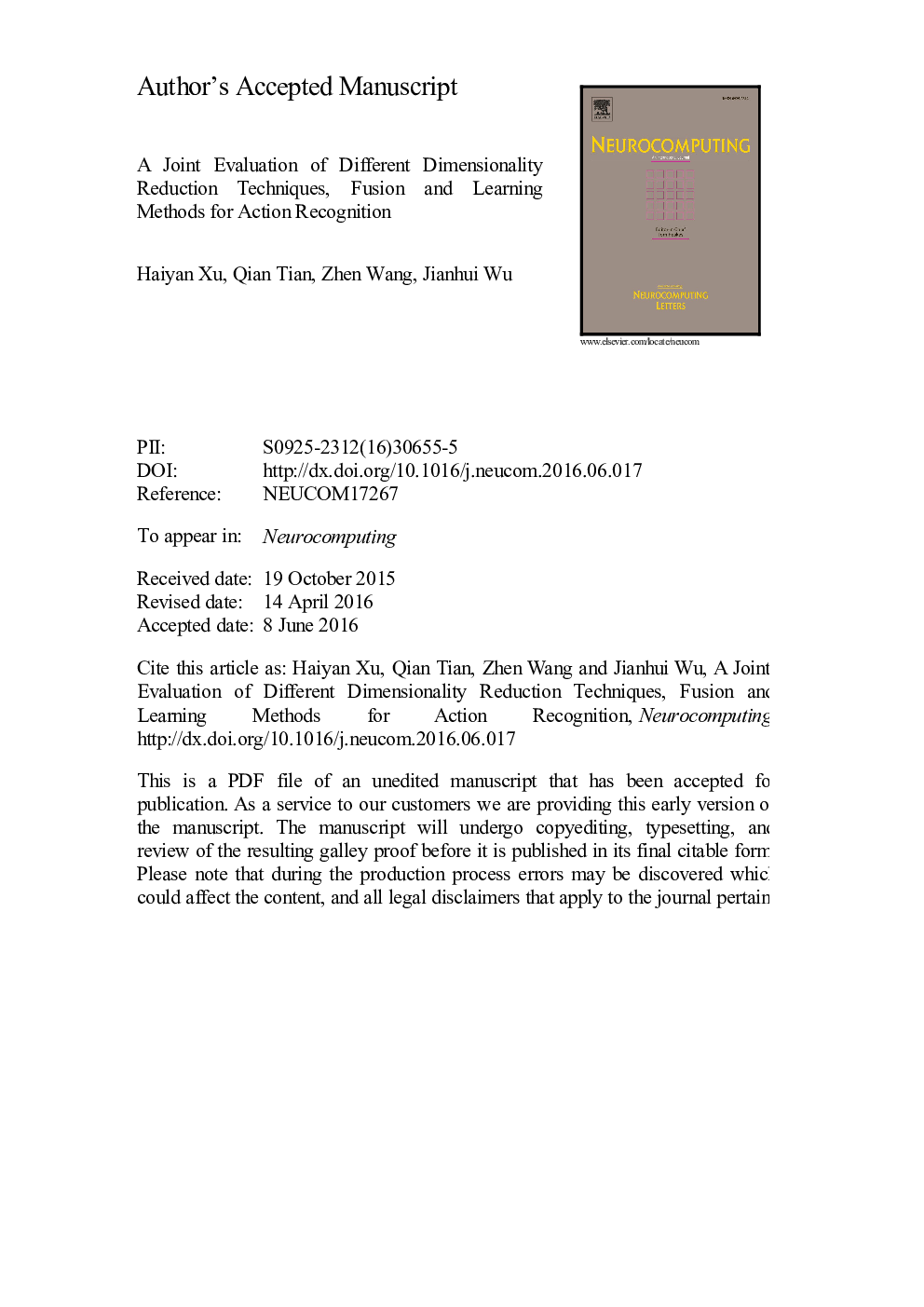| Article ID | Journal | Published Year | Pages | File Type |
|---|---|---|---|---|
| 4948431 | Neurocomputing | 2016 | 30 Pages |
Abstract
This paper addresses the problem of action recognition with improved dense trajectories (IDT). Recently, IDT achieved a significant performance in action recognition with realistic videos. However, the efficiency of storage and the speed of classification are limited due to the dense samples in feature space. To address this issue, the intuitive way is to reduce the dimension and adopt a fast classification method. Therefore, we explore the influence of dimensionality reduction on the recognition rate. In addition, Extreme Learning Machine (ELM) is adopted to further improve classification efficiency. We present performance on the KTH, UCF11, HMDB51, and UCF101 datasets in all kinds of situations such as the different fusion methods, the different dimensionality reduction, and different learning methods. As a result, it can be observed that ELM with principal components analysis (PCA) improves the performance in terms of mean average precision (mAP) which not only significantly reduces computational cost but improves accuracy. What's more, the training and testing time decrease 1-2 orders of magnitude without losing accuracy when Fisher vector (FV) adopts reduction techniques before it fed into classifier.
Related Topics
Physical Sciences and Engineering
Computer Science
Artificial Intelligence
Authors
Haiyan Xu, Qian Tian, Zhen Wang, Jianhui Wu,
